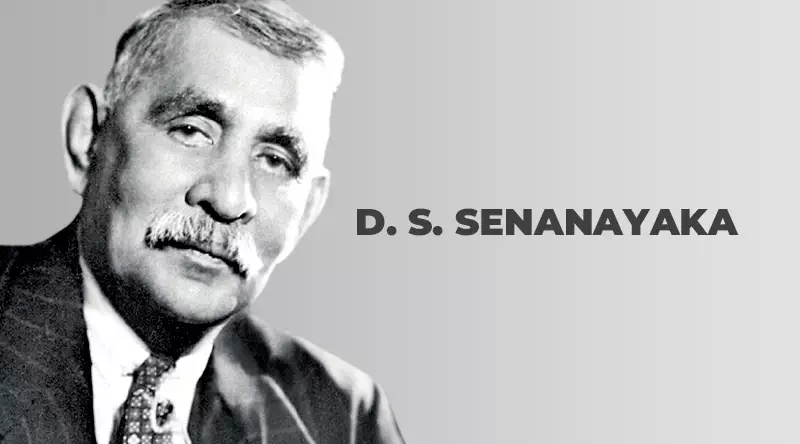Don Stephen Senanayake renowned as the Father of the Nation, was born on Oct. 20, 1884. Post Sri Lanka receiving independence from the English, D.S. Senanyake became the first Prime Minister of Ceylon in 1947.
Senanayake was educated in St. Thomas College, an Anglican school in Mutwal. Before his employment as a rubber planter in his father’s estate, he spent a period of time as a clerk in the Surveyor General’s Office, post which he entered the Legislative Council in 1922 and was elected to the State Council in 1931. He was appointed as the Minister for Agriculture and Lands, a post which he held for 15 years thereafter. Within two years, he introduced the Land Development Ordinance, which converted barren lands into cultivation plots by enabling adequate access to irrigation schemes.
During the Second World War, when Ceylon faced challenges on the back of reduced foreign rice supplies, Senanayake opened new trade with Egypt and Brazil and increased imports of, the less scarce, wheat flour by tenfold. Through the Ceylon’s Cooperative-Society Movement which originated in 1923, D. S. Senanayake strongly emphasized on the importance of and benefits associated with cooperatives and attempted to empower the Ceylonese people with agricultural modernization. Although Senanayake was bestowed the title of Knighthood from the British which was a great honour to both himself and the nation, D. S. Senanayake politely declined it in 1946 with tremendous gratitude to the British for their goodwill.
D. S. Senanayake’s exemplary leadership skills and interpersonal skills in associating other political leaders, played a pivotal role in emerging victorious from the independence struggle of the then Ceylon. He and his elder brother F.R. Senanayake and other associates namely Sir D.B. Jayathilake, Sri Ponnambalam Ramanadhan, Sir Ponnambalam Arunachalam, T.B. Jayah, E.W. Perer, amongst others, spearheaded the Independence Movement of Ceylon. This intellectual and enthusiastic group were the engineers of the success of the struggle which was achieved with zero casualties.
After being appointed as the Prime Minister in 1947, he won the hearts of the nation and gained respect from all ethnicities and European communities. He was also able to maintain the morale of the civil service during the transition period, despite the loss of British workforce. His Gal Oya multipurpose scheme to colonize uninhabited areas, resettled and provided homes and facilities to 250,000 people. In a country with no deposits of coal, oil, or gas, he encouraged modern and novel technology such as hydroelectric-power development. Whilst heading the Ministries of Defence and External Affairs, he also headed the Ministry of Health and the Local Government in 1951.
On a normal Friday morning, D. S Senanayake went horse-riding and on that unfortunate day he was thrown off his horse. His unexpected death on 22 March 1952 shocked the entire nation as succumbed to the injuries from the fall. His demise ended over half a decade of extraordinary leadership. His remains were left at the House of Representatives where over half a million people payed their last respects. His state funeral was graced by over 32,000 people taking part in the funeral procession. The procession ended at Independence Square where the remains were cremated.
D.S. Senanayake remains one of the most celebrated and revered political influences of Ceylonese history.













